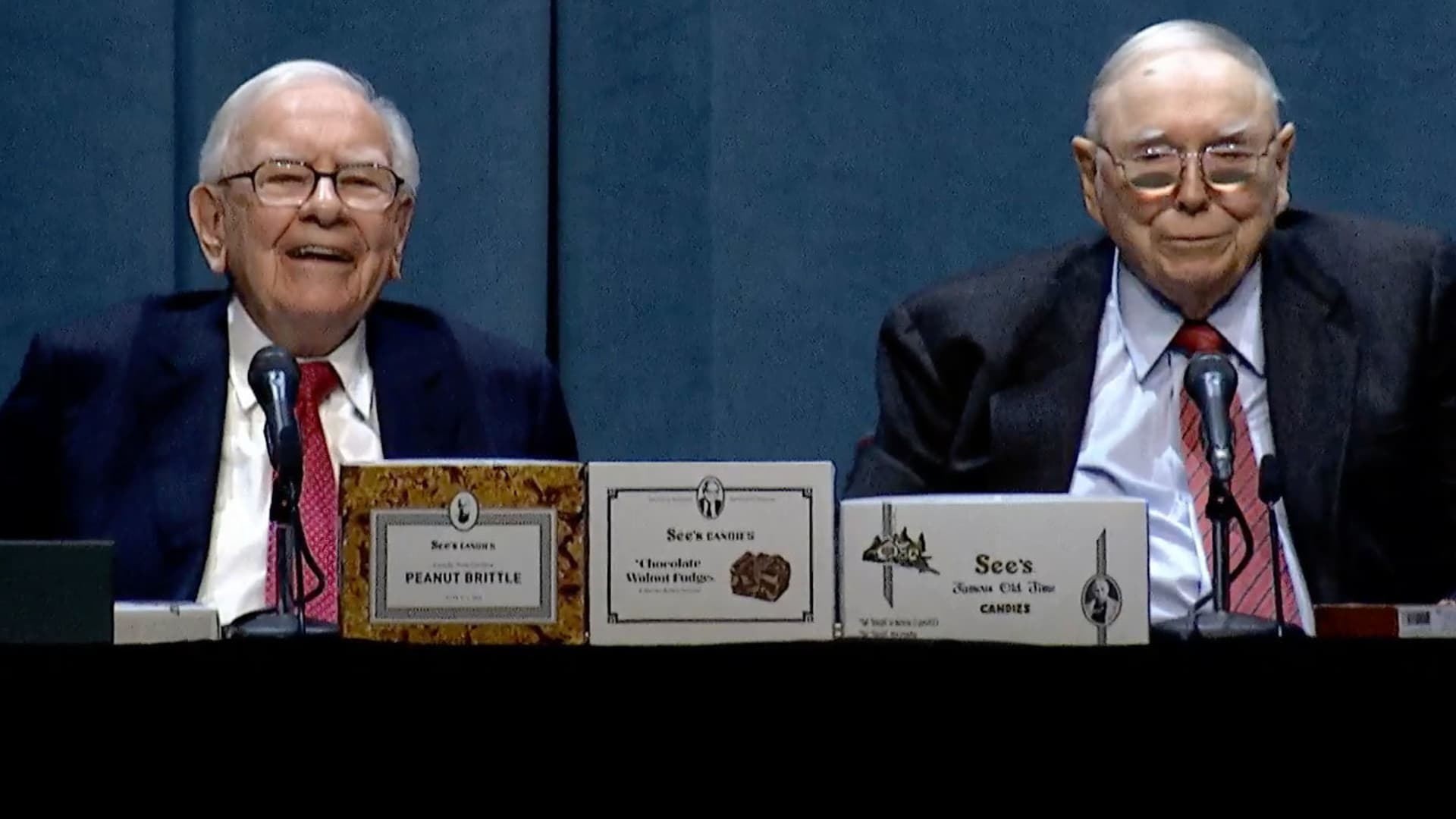Interest rate isn’t everything: How to compare money market vs. savings accounts
[ad_1]

With numerous banks, credit unions, and fintechs raising the APYs on their deposit accounts, one thing’s certain: It’s finally a saver’s market.
In a single web search, you can find various financial institutions hungry for your business—and ready to pay top-tier interest rates on money market and savings accounts to get you in the door.
But deciding between these two options goes beyond interest rates alone. You’ll want to put your financial goals front and center in your decision-making process to find the best savings vehicle for your cash. And if you have multiple goals, combining both account types might be the wisest route.
Money market vs. savings account
Money market and savings accounts are insured deposit accounts that pay savers interest on the money they deposit and keep in their account. However, the most significant differentiators are interest rates, account features, and opening deposit requirements.
Savings accounts give you a safe place to keep your cash and offer low to no account minimums. However, interest rates are typically low, and you’ll have limited ways to access your savings.
Money market accounts have all the features of savings accounts but are dialed up a notch. In exchange for a higher minimum requirement, you’ll generally score a higher interest rate—along with extra features like a debit card and check-writing access to your money.
Now that you know the basics, let’s take a deeper dive on features and how each account can help you achieve different financial goals.
What is a money market account?
Money market accounts combine the best features of savings and checking accounts, rolling great interest rates and flexible cash access into a single account.
But while money market accounts typically have higher opening deposit requirements than everyday savings accounts, they reward you with higher interest rates. Then when you need to access your savings, many accounts offer added features like debit cards and checks to make withdrawals a breeze.
And you won’t have to look far to find a money market account. Banks and credit unions offer them across the country. But no matter where you open an account, your money is insured up to $250,000 per depositor, per institution, and account ownership category. Bank insurance is through the FDIC, while credit union insurance is through the NCUA for these amounts.
Carina Berlin, a certified financial planner with Kayne Anderson Rudnick in Santa Monica, California, says that beyond their debit and check privileges, money market accounts can make sense for other reasons. For example, she points out that savers who keep a large cash balance can benefit from a money market account’s higher yields.
But if you’re just starting your savings journey, you may still be able to enjoy the perks these accounts offer. While many banks still have hefty minimum balance requirements and charge fees for falling below them, other banks now offer money market accounts with $0 minimums—making money markets more accessible to more savers than ever.
How money market accounts work
When you open a money market account, your bank or credit union pays you interest on the money you deposit. That interest rate is called an annual percentage yield (APY), a variable interest rate that can change over time.
For example, when the Federal Reserve raises interest rates, rates for other financial products go up—money market accounts included. Similarly, your account’s APY can remain steady or fall. It all depends on market conditions.
Over time, you’ll accumulate interest on the money you deposit into your account. Then, interest will accrue on your balance—plus any interest earned the previous month. This is known as compound interest. But unlike savings accounts, money market accounts are designed to help you spend as easily as you save.
So while you’ll want to keep a checking account for everyday expenses, many money market accounts let you use a debit card or checks to draw on your savings. But there’s a catch: Your account could have monthly limits on the number of withdrawals you can make.
The Federal Reserve used to limit the number of withdrawals you could make from savings and money market accounts to six per month through a provision called Regulation D. But once the Covid-19 pandemic hit, the Fed realized that consumers may need more urgent access to their funds and lifted its withdrawal limits as of April 2020. But banks and credit unions can still impose their own limits, so be sure to inquire about transaction limits with any financial institution where you consider opening an account.
Pros and cons of money market accounts
With many financial institutions offering lower opening deposit requirements for money market accounts, higher yields and convenient withdrawal options are now available to more consumers than ever. But on the flip side, it’s important to pay attention to account terms—including fees and withdrawal limits.
Pros
- More ways to access savings
- FDIC-insured
- Higher APY
Cons
- May incur fees if minimum balance isn’t met
- Higher minimum balance requirements
- Potential monthly withdrawal limits
What is a savings account?
Similar to money market accounts, a savings account allows you to deposit your cash so it earns some interest over time. And unlike keeping cash at home where it’s susceptible to theft or other kinds of loss, savings accounts keep your money secure and insured. You’ll also enjoy compounding on that interest, just as you would with a money market account, which can help your savings grow faster.
But unlike money market accounts, savings accounts have low to no minimum balance requirements and few fees, making them ideal for savers at any stage of their financial lives.
“I like to think of savings accounts as your first line of defense, as a place for cash for emergency needs,” says Berlin at Kayne Anderson Rudnick. She recommends that clients set up their savings account at the same financial institution as their primary checking account, as it makes transferring money back and forth an easy process when life comes calling with its curveballs.
And if you’re a new saver, the link between your savings and checking accounts can have an added benefit. You can set up scheduled deposits to put your savings on autopilot for goals like an emergency fund or a new car, helping you think less and save more.
But if you want to avoid the temptation to tap your savings, Spencer Betts, a certified financial planner with Bickling Financial Services in Lexington, Massachusetts, says opening a savings account away from your home financial institution can be a better choice. “Now, there’s an active thought process to take money out of your savings account,” he says. “A savings account held away like that can help you be more mindful when tapping funds.”
How savings accounts work
Like money market accounts, you can find savings accounts at a wide selection of banks and credit unions. And when you deposit money, you’ll earn interest via a variable rate APY that fluctuates up and down with market conditions.
However, savings accounts aren’t designed for spending like money market accounts. Instead, they’re simply a place to keep your money for long periods of time, and your options for accessing your cash are limited.
Some savings accounts might come with an ATM card or offer ATM access through your checking account debit card if your accounts are linked. But beyond the ATM, you’ll most often be limited to electronic and phone transfers or in-person withdrawals at the bank—some of which can slow down access to funds on weekends and after banking hours. And as with money market accounts, your bank might still enforce transfer and withdrawal restrictions on savings accounts, so you’ll need to read the fine print.
But at the end of the day, savings accounts are a safe way to save money and earn some interest. And while they might not have all the bells and whistles of a money market account, they make savings simple for everyone—from kids saving their allowance to families saving for a vacation.
Pros and cons of savings accounts
Savings accounts help you get your cash to a secure location and earn interest for doing so. However, they do have their limits—especially when it comes to yield and ways to access your cash.
Pros
- Earn more interest than checking account
- ATM access to savings
- FDIC-insured
Cons
- Fewer ways to access savings than money market accounts
- Lower yield than money market accounts
- Potential monthly withdrawal limits
How to choose between the two
While money market and savings accounts can both help your savings grow through the magic of compound interest, there’s more to consider when choosing one or the other to meet your savings goals. Betts says that savers should consider a four-step process to decide which account—or accounts—will be the best fit.
- Your savings goal. Knowing how you’ll use the money dictates responses to the following three steps.
- Timeline. Consider how long you’ll keep the money in savings.
- Speed. Ask how quickly you might need access to your savings.
- Restrictions. Know if your account comes with withdrawal and transfer restrictions and, if so, how you’ll manage them.
A money market account might be the best choice if…
- Your top priority is yield. Higher APYs can make money markets tough to beat.
- You have longer-term savings goals. The higher yield over a longer time can boost your savings.
- You value flexibility. Debit and check options let you make a purchase, online or in-person, without waiting for funds to transfer between accounts.
A savings account might be your best choice if…
- You’re less concerned with yield than liquidity. Having savings linked to your primary checking account can offer reassurance that your savings will be easy to access.
- You’re building your emergency fund. Linking your checking and savings can help pay for emergencies when they happen, not days later.
- You don’t need the added perks. A traditional savings account is great for someone who doesn’t need or want debit and check access to their savings.
You might want a money market and a savings account if…
- You have an emergency fund but need to save for a longer-term goal. You may want to keep your emergency fund in savings but use a money market account and its higher yield to save for a home down payment in five years.
- You don’t want to change banks. You can keep your savings or money market account through your primary bank but open the other type of account at a bank offering higher yields.
And if you’re stressed about choosing the right type of account, Arijit Roy, head of consumer segment and solutions at U.S. Bank, says don’t be. “There’s no one size fits all, so you do you,” he says. The way he sees it, savings and money market accounts offer attractive yields, making the current market a wonderful time to shop around, compare rates and start with the savings solution that works for you today—which you can always change tomorrow.
[ad_2]
Source link


